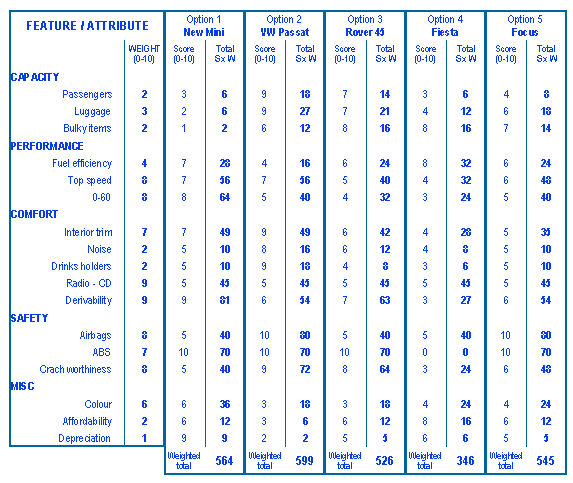Weighting and rating
Commonly used method for assessing the relative merits of a range of options. Used to support any type of decision making, from buying the right car (see example) to selecting the best concept.
Method
List the most important features
These should have been determined during the product definition phase and form the criteria against which rival solutions will be judged. Keep this to a manageable amount.
Determine weightings
Some features will be more critical than others. Assign weightings to each, so that their relative merits are accounted for. Ideally, the weightings should be determined in partnership with the target customers.
Score each option
Again, where possible, the scoring should be led by customers to remove personal bias from amongst the design team.
Calculate the weighted totals
Multiply the score by the weighting for each feature and sum the totals

Notes
This approach can be good at indicating the front runners, but numerical methods like this can be dangerous, as they tend to imply only one 'right' answer. It should always be remembered that both the weightings and the ratings are subjective and arbitrary, and thus although a quantitative answer is gained, it too is subjective. This approach is also extremely sensitive to small changes and it can be easy to 'cook the books', so it needs to be used with caution.
For more information, please contact:
T: +44 1223 764830









